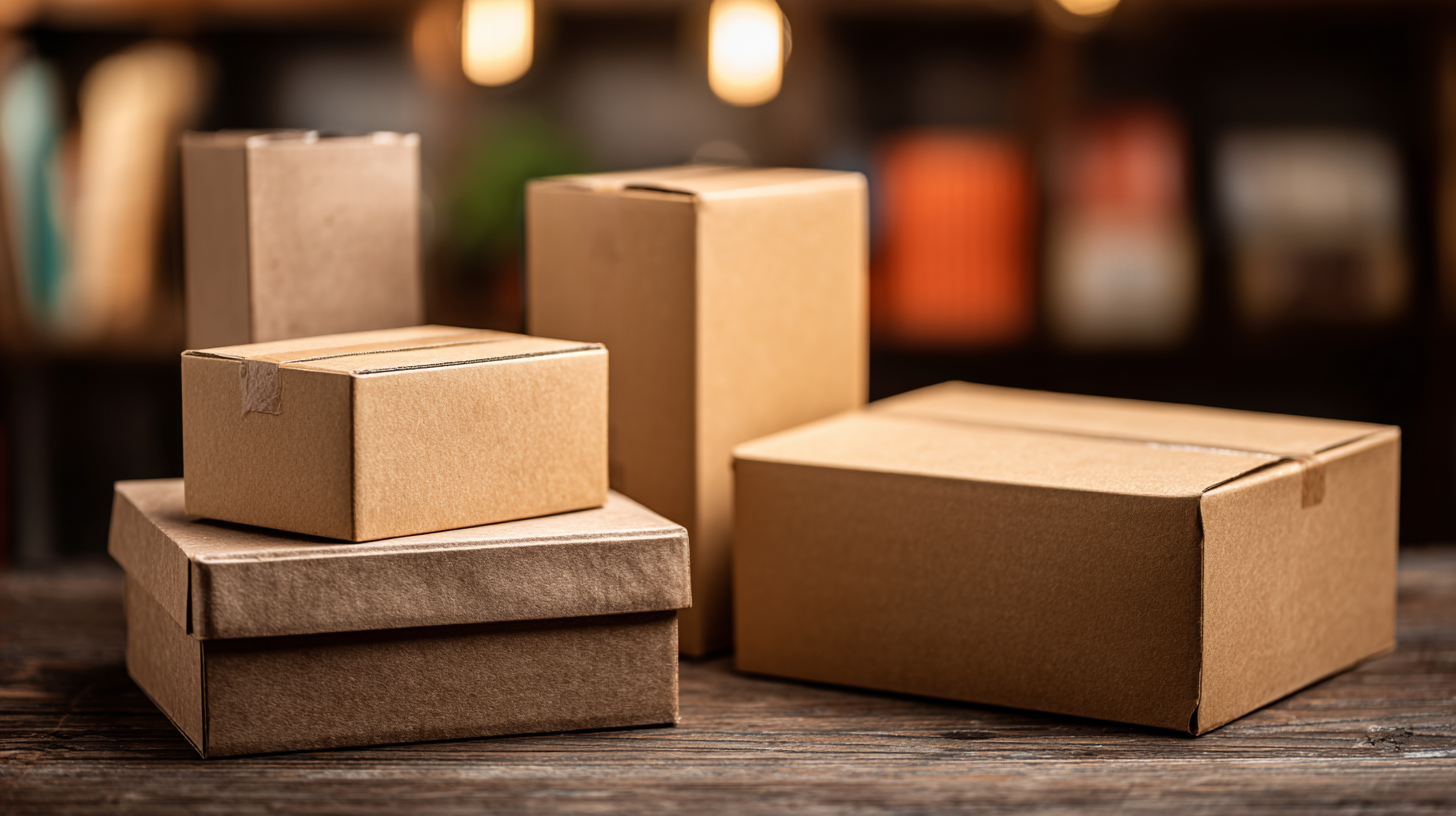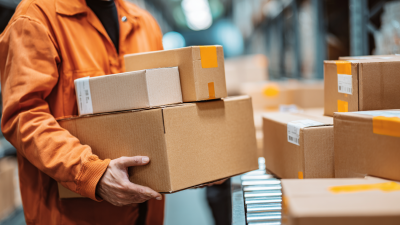The Future of Shipping Boxes and Packaging Exploring Sustainable Solutions and Market Trends
The sustainability packaging industry is undergoing a significant transformation as sustainability becomes a key focus for businesses and consumers alike. According to a recent report by Smithers Pira, the global market for sustainable packaging is projected to reach $475 billion by 2024, highlighting the growing demand for eco-friendly solutions in shipping boxes and packaging. This shift is driven by increasing environmental awareness and legislative pressure, compelling companies to adopt more sustainable practices. Innovative materials, such as biodegradable plastics and recycled content, are becoming mainstream, as businesses seek to reduce their carbon footprint while meeting consumer expectations for responsible packaging. As we explore the future of shipping boxes and packaging, understanding market trends and examining sustainable solutions will be crucial for companies aiming to remain competitive in this evolving landscape.

Sustainable Materials Revolutionizing Shipping Boxes in E-commerce
The growth of e-commerce has accelerated the demand for shipping boxes and packaging solutions, emphasizing the urgent need for sustainable materials. According to a report by Smithers Pira, the global demand for sustainable packaging is expected to reach $400 billion by 2027, driven by consumers increasingly preferring eco-friendly options. This trend has prompted manufacturers to innovate, leading to the use of biodegradable, recycled, and compostable materials in shipping boxes. For example, companies like Amazon and Walmart are investing heavily in sustainable packaging, targeting a 50% reduction in plastic use within specific timeframes.
Moreover, the adoption of innovative materials such as mushroom-based packaging and reusable containers is reshaping the e-commerce landscape. A study by the Ellen MacArthur Foundation predicts that by 2025, packaging made from renewable materials could account for up to 60% of the market, significantly reducing carbon footprints. As more businesses recognize the environmental benefits and cost savings associated with sustainable packaging, it is clear that the industry is on the cusp of a considerable transformation, with sustainability becoming a key driver for future growth in shipping boxes.
How Biodegradable Packaging is Shaping Consumer Preferences and Market Demand
As sustainability gains traction, biodegradable packaging is significantly influencing consumer preferences and market demand. According to a recent report by Smithers Pira, the global biodegradable packaging market is expected to reach $800 million by 2027, reflecting a compound annual growth rate (CAGR) of approximately 15.5%. This surge is largely driven by heightened environmental awareness among consumers, who are increasingly prioritizing eco-friendly options when making purchasing decisions. A Nielsen survey indicated that 73% of global consumers are willing to change their consumption habits to reduce environmental impact, with biodegradable materials emerging as a favored choice.
Moreover, companies are adapting to this shift, with many big brands committing to sustainable packaging solutions. For instance, Unilever aims to make all of its plastic packaging recyclable, reusable, or compostable by 2025. Concurrently, the use of biodegradable packaging aligns with regulations and demands for reduced plastic waste, as urban areas across the globe enforce stricter waste management policies. The adoption of biodegradable materials is paving the way for innovative packaging solutions that not only meet consumer needs but also contribute to a circular economy, highlighting a crucial trend in the evolving landscape of shipping and packaging.

Innovative Technologies Driving Efficiency in Packaging Waste Reduction
 The shipping and packaging industry is rapidly evolving, driven by rising environmental awareness and innovative technologies aimed at reducing packaging waste. As consumers and businesses alike become more conscious of their ecological footprint, the demand for sustainable packaging solutions is expected to soar. The packaging waste recycling market is projected to grow from USD 33.8 billion in 2025 to approximately USD 53.0 billion by 2035, reflecting a robust compound annual growth rate (CAGR) of 4.6%. This growth underscores the industry's shift towards more eco-friendly practices, enabling the reduction of greenhouse gas emissions and promoting resource efficiency.
The shipping and packaging industry is rapidly evolving, driven by rising environmental awareness and innovative technologies aimed at reducing packaging waste. As consumers and businesses alike become more conscious of their ecological footprint, the demand for sustainable packaging solutions is expected to soar. The packaging waste recycling market is projected to grow from USD 33.8 billion in 2025 to approximately USD 53.0 billion by 2035, reflecting a robust compound annual growth rate (CAGR) of 4.6%. This growth underscores the industry's shift towards more eco-friendly practices, enabling the reduction of greenhouse gas emissions and promoting resource efficiency.
Innovative technologies are at the forefront of this transformation, with developments in packaging waste recycling making significant strides. Smart technologies, such as real-time food quality monitoring, can dramatically minimize food waste by ensuring products remain consumable for longer periods. Additionally, emerging tools like breathable bag perforators facilitate more efficient waste management, positioning the industry for strong growth through 2035.
Tips: Consider investing in packaging that incorporates smart technology to enhance product longevity. Additionally, keep an eye on advancements in recycling technologies, as they can offer competitive advantages and align with sustainability goals. Transitioning to eco-friendly materials will not only benefit the environment but may also improve brand loyalty among increasingly conscious consumers.
Market Trends in Reusable Shipping Solutions and their Environmental Impact
The market for reusable shipping solutions is gaining momentum as businesses increasingly recognize the environmental consequences of traditional packaging. With the rise of e-commerce and heightened consumer awareness regarding sustainability, companies are now exploring innovative alternatives to single-use boxes. Reusable packaging systems, such as returnable pallets, totes, and modular containers, not only help reduce waste but also minimize carbon footprints associated with the manufacturing and transportation of new packaging materials.
Additionally, the environmental impact of these reusable solutions underscores their appeal in today’s marketplace. Businesses that adopt such practices are often able to improve their operational efficiency and contribute to a circular economy. Cost savings from reduced material consumption and waste disposal fees further enhance the economic advantages of switching to reusable options. As consumers increasingly demand sustainable practices, companies that invest in reusable shipping solutions are likely to gain a competitive edge while fostering a more responsible and eco-friendly supply chain.
The Future of Shipping Boxes and Packaging: Exploring Sustainable Solutions and Market Trends
| Dimension | Statistic | Impact |
|---|---|---|
| Market Size of Reusable Packaging (2023) | $25 Billion | Promotes circular economy |
| Annual Reduction in Plastic Use by Reusable Packages | 50 million tons | Significant decrease in ocean pollution |
| Growth Rate of Reusable Solutions (2020-2025) | 15% CAGR | Increased investment in sustainable practices |
| Percentage of Companies Implementing Reusable Solutions by 2025 | 65% | Shift towards sustainable business operations |
| Consumer Preference for Eco-Friendly Packaging | 72% | Increased demand for sustainable products |
The Role of Government Regulations in Promoting Sustainable Packaging Practices
Government regulations play a crucial role in steering the packaging industry toward more sustainable practices. As the global market for sustainable packaging is projected to grow from $4.77 billion in 2025 to $6.02 billion by 2032, with a compound annual growth rate (CAGR) of 3.39%, policymakers are increasingly recognizing the need for clear guidelines and incentives. These regulations not only drive innovation in materials and designs but also encourage companies to adopt eco-friendly packaging solutions that minimize environmental impact.
Furthermore, the protective packaging market, expected to rise from $30.4 billion in 2025 to $47.8 billion by the end of 2035, highlights a growing demand for sustainable practices within this sector. With a CAGR of 4.9% from 2026 to 2035, regulatory frameworks are pivotal in promoting the use of recyclable and biodegradable materials. In parallel, the sustainable recycled fiber market is anticipated to grow from approximately $7.66 billion in 2025 to $12.44 billion by 2033, reflecting a CAGR of 6.2%. This trend signals a significant shift as governments enforce stricter regulations on waste management and resource recovery, thereby supporting companies in their quest for sustainability.
The Future of Shipping Boxes and Packaging: Exploring Sustainable Solutions and Market Trends
Related Posts
-

What is the Importance of Choosing the Right Shipping Boxes for Your Home
-

Harnessing Supply Boxes Trends at the 138th Canton Fair in 2025 for Industry Growth
-

What is the Importance of Custom Design Shipping Boxes for Your Business
-

Revolutionizing Logistics: The Untold Secrets Behind Industrial Shipping Boxes
-

Maximize Your Logistics Efficiency with Custom Industrial Shipping Boxes
-

Essential Tips for Choosing the Right Boxes Supplies for Your Business Needs
